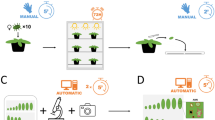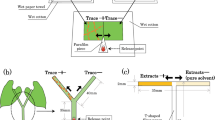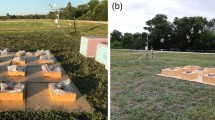Abstract
ABOUT the 13th of last September my attention was called to the strange appearance of a row of lime-trees standing in front of the School of Art buildings in Hastings Street. On examination I found that the whole row, with, I think, only one exception, were almost entirely devoid of leaves, the trunks and branches being covered with a fine web, very closely spun, giving them the appearance of being coated with a thin layer of ice, this glazed look being specially noticeable when standing in such a position as to catch the reflected rays of the sun. At first sight I imagined that I was examining the work of a spider, though I was unable to recollect any whose webs would accord with the character of those under observation. However, a close inspection revealed the webs to be tenanted by an innumerable number of yellowish or orange-coloured mites which were in some places associated together in dense masses or clusters, and more or less abundant over the whole of the trunks and branches.
This is a preview of subscription content, access via your institution
Access options
Subscribe to this journal
Receive 51 print issues and online access
$199.00 per year
only $3.90 per issue
Buy this article
- Purchase on SpringerLink
- Instant access to full article PDF
Prices may be subject to local taxes which are calculated during checkout
Similar content being viewed by others
Author information
Authors and Affiliations
Rights and permissions
About this article
Cite this article
ROWLEY, F. On a Mite of the Genus Tetranychus found infesting Lime-trees in the Leicester Museum Grounds. Nature 41, 31 (1889). https://doi.org/10.1038/041031c0
Issue date:
DOI: https://doi.org/10.1038/041031c0



